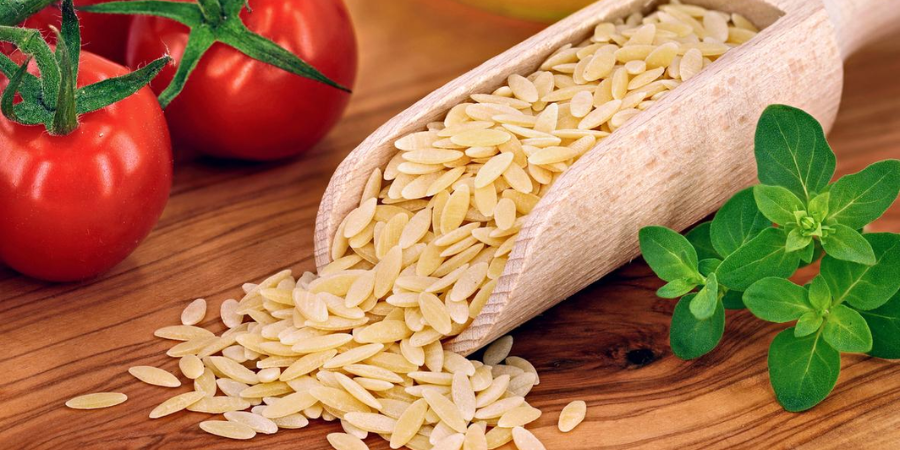Orzo, a small, rice-shaped pasta, is a staple in many kitchens around the world. But is orzo healthy? This article dives deep into the nutritional profile of orzo, its health benefits, potential downsides, and how to incorporate it into your diet effectively.
What is Orzo?
Orzo is a type of pasta that resembles rice. It’s commonly used in Mediterranean cuisine and can be found in salads, soups, and as a side dish. While it may look like a grain, orzo is made from wheat flour, making it a carbohydrate-rich food.
Nutritional Profile of Orzo
To understand whether orzo is healthy, let’s break down its nutritional content. A typical serving size of cooked orzo (about 1 cup or 200 grams) contains:
| Nutrient | Amount per 1 cup (200g) |
|---|---|
| Calories | 220 |
| Carbohydrates | 43g |
| Protein | 7g |
| Fat | 1g |
| Fiber | 2g |
| Iron | 10% of the Daily Value |
| B Vitamins | Various amounts |
Health Benefits of Orzo
- Good Source of Energy: Orzo is primarily composed of carbohydrates, which are essential for energy. This makes it an excellent choice for athletes and active individuals.
- Rich in B Vitamins: Orzo contains several B vitamins, including thiamine and niacin, which are crucial for energy metabolism and overall health.
- Versatile Ingredient: Orzo can be used in various dishes, from salads to soups. Its versatility allows for easy incorporation into a balanced diet.
Potential Downsides
While orzo has its benefits, there are some considerations to keep in mind:
- High in Carbohydrates: For those following low-carb diets, orzo may not be the best option due to its high carbohydrate content.
- Gluten Content: As orzo is made from wheat, it is not suitable for those with gluten intolerance or celiac disease.
- Low Fiber Content: While orzo does contain some fiber, it’s not as high as whole grains. This could be a concern for those looking to increase their fiber intake.
How to Incorporate Orzo into Your Diet
If you’re wondering is orzo healthy, the answer largely depends on how you use it in your meals. Here are some creative ways to include orzo in your diet:
- Orzo Salad: Combine cooked orzo with fresh vegetables like cherry tomatoes, cucumbers, and bell peppers. Add olive oil and lemon juice for a refreshing salad.
- Soups and Stews: Orzo can be a great addition to soups and stews. It absorbs flavors well and adds a hearty texture.
- Side Dishes: Serve orzo as a side dish with grilled chicken or fish. Toss it with herbs and spices for added flavor.
- Casseroles: Incorporate orzo into casseroles for an easy one-dish meal that’s filling and nutritious.
Comparing Orzo to Other Grains
To better understand the health implications of consuming orzo, let’s compare it to other common grains:
| Grain | Calories (per cup) | Protein (g) | Fiber (g) | Gluten-Free |
|---|---|---|---|---|
| Orzo | 220 | 7 | 2 | No |
| Quinoa | 222 | 8 | 5 | Yes |
| Brown Rice | 218 | 5 | 3 | Yes |
| Barley | 193 | 4 | 6 | Yes |
Key Takeaways from the Comparison
- Protein: Quinoa has the highest protein content.
- Fiber: Barley is the best choice for fiber.
- Gluten-Free Options: Quinoa and brown rice are suitable for gluten-free diets.
Is Orzo Healthy for Weight Loss
Orzo can be a part of a weight loss diet when consumed in moderation. While it’s higher in carbohydrates, it offers a good source of energy and can be filling. Pairing orzo with plenty of vegetables and lean proteins enhances its nutritional value and keeps you satisfied. Opt for whole grain orzo for added fiber, which aids digestion and promotes fullness. Ultimately, balance and portion control are key; enjoy orzo as part of a varied, healthy diet for effective weight management.
Is Orzo Healthier Than Rice
When comparing orzo and rice, each has unique nutritional benefits. Orzo typically contains more protein and B vitamins, making it a good option for energy and overall health. However, brown rice boasts higher fiber content, which aids digestion and promotes fullness. If you’re looking for a gluten-free option, rice is the better choice. Ultimately, the healthier option depends on your dietary goals and preferences. Including both orzo and rice in your meals can provide variety and balance in your nutrition.
Is Orzo Healthier Than Regular Pasta
Orzo and regular pasta share similar nutritional profiles, as both are primarily made from wheat. However, orzo often contains slightly more protein and B vitamins due to its smaller size and denser texture. While orzo can be a nutritious option, it’s essential to consider portion sizes. Whole grain pasta varieties may offer more fiber, which aids digestion and promotes fullness. Ultimately, both can fit into a healthy diet; the key is to choose whole grain options and balance them with vegetables and lean proteins.
Real-Life Examples: How People Use Orzo
Many people incorporate orzo into their diets creatively:
- Maria, a fitness enthusiast, uses orzo in post-workout meals mixed with vegetables and lean protein.
- John, who enjoys cooking Mediterranean dishes, often prepares lemony orzo with shrimp as a flavorful dinner option.
- Sophie, a busy mom, adds cooked orzo to her kids’ soups for added nutrition without fuss.
These examples show how versatile orzo can be while still being part of a healthy lifestyle.
Conclusion: Is Orzo Healthy?
So, is orzo healthy? The answer is nuanced:
- If you enjoy pasta and are looking for an energy source, orzo can be a healthy addition to your diet.
- It offers several nutritional benefits but should be consumed mindfully if you have dietary restrictions like gluten intolerance.
- Pairing it with plenty of vegetables and lean proteins can enhance its health benefits significantly.
Ultimately, moderation is key! Enjoying orzo as part of a balanced diet can lead to satisfying meals that nourish your body and tantalize your taste buds.
In summary, whether you choose to include or exclude orzo from your meals depends on your dietary preferences and health goals. With its versatility and flavor profile, it’s worth considering how this small pasta can fit into your culinary repertoire!



